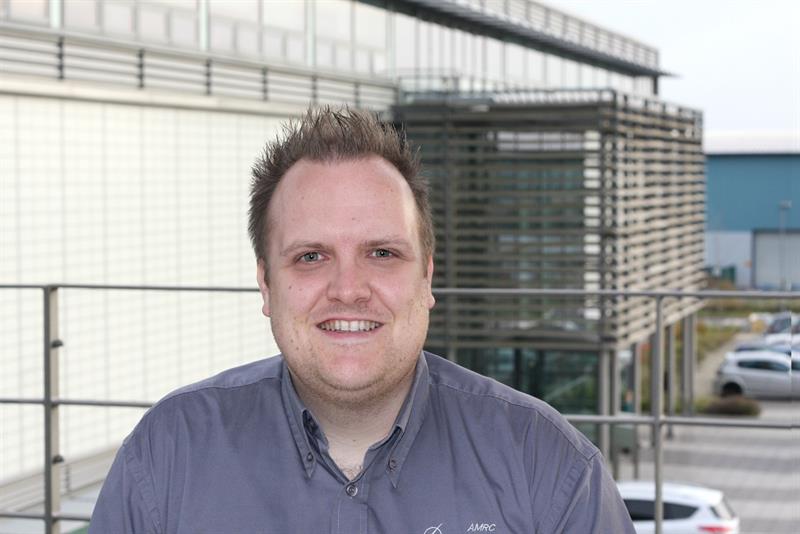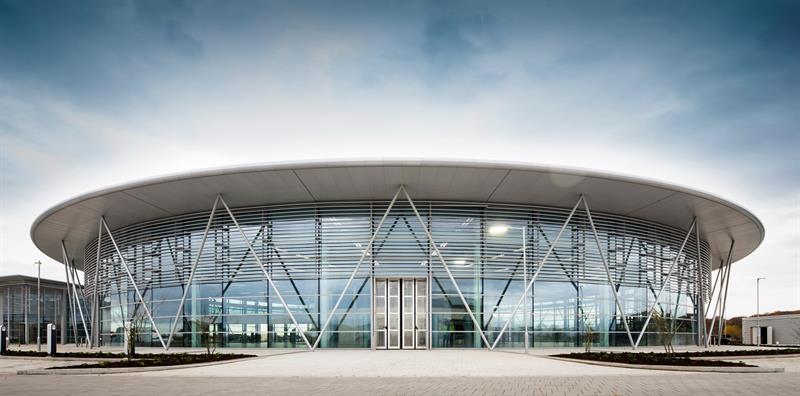The machine is expected to be delivered in June and will be located in the AMRC’s new, reconfigurable factory, Factory 2050, that, like the AMRC, is located on the Advanced Manufacturing Park situated on the Sheffield-Rotherham border.
The research will be aimed at getting an understanding of the capability of this combination production method, with the intention of developing it to a higher technology readiness level (TRL - see https://esto.nasa.gov/files/trl_definitions.pdf for definition).
The effort will include looking at options such as growing features onto a base component or building one from scratch, plus aspects of sequential additive and subtractive manufacture, and the capability that this will enable. The opportunity to investigate cladding and laser treatment of material will also be explored.
In addition, the integrity of the parts produced will be investigated, down to the micro-structure level, as will repeatability to see if the process is suitable for the production of critical components.
AMRC’s Dr David Curtis explains: “It is clear that [combined] additive and subtractive technology is good for non-critical parts. Welding parts onto the structure, which is what happens on the Lasertec 65 3D, will be quite different to forging or powder metallurgy. We will be examining post-treatment options, such as depositing hard coatings, to ensure that strength is appropriate to function. Other options include the possibility of changing the composition of the material during the additive process.”
 Dr David Curtis - research will be led by AMRC partners looking for step-change
Dr David Curtis - research will be led by AMRC partners looking for step-change
Research will be led by AMRC partners within industry that are looking at this new approach and who are said to regard this combination as a key disruptive technology that will offer a step-change in the way products are made. Says Curtis: “There is a growing interest in this emerging technology across UK-based manufacturers and we partner with other centres across the UK that are investigating disruptive technology and metallurgy.”
The first application under investigation takes in gear manufacture, which is currently supported by well established manufacturing processes, so applying disruptive technology could result in a radical change, says the AMRC. Further investigations will cover topics more closely aligned to aerospace applications, “exploring the art of the possible”, as well as assessing the application of the technology to advanced materials.
Curtis concludes: “AMRC with Boeing partners are supporting this near-net shape activity and the results from these projects will be disseminated through academic publications and conferences here in the UK and abroad. [Combined] Additive and subtractive manufacture will also form an important part of the AMRC Factory 2050, which is to incorporate the next-generation man-machine interfaces in a reconfigurable, data-driven manufacturing environment.”
Adds AMRC executive dean Professor Keith Ridgway CBE: “We aim to make Factory 2050 the most advanced factory in the world. Built to carry out collaborative research, it has been designed to ensure the UK’s advanced manufacturing supply chain can access the expertise it needs to make the most of new challenges and opportunities, and that our region retains its international lead in high value manufacturing.”
 The AMRC's Factory 2050 will be home to the DMG Mori Lasertec 65 3D
The AMRC's Factory 2050 will be home to the DMG Mori Lasertec 65 3D
The DMG Mori Lasertec 65 3D employs laser deposition welding to build up components and can lay down two different powdered materials during a 5-axis process at a rate that is more than 10 times faster than powder-bed additive manufacturing technology. It is possible to alternate between milling and laser deposition, creating parts that would otherwise be very difficult or impossible to manufacture in one operation. During milling operations, the laser head is safely stored outside the machining envelope.
The machine can build parts up to 500 mm in diameter that can include undercuts yet need no supporting structure to do so, as would be the case with powder-bed additive manufacturing technology. The machine can also generate parts having internal channels. The AMRC’s Lasertec 65 3D will additionally be equipped with an ultrasonic technology pack that will allow for the machining of wear-resistant coatings that have been deposited by additive manufacturing.
DMG Mori has four additive manufacturing technology centres worldwide and has a database of materials and related process parameter settings, while it can also work with customers on specific material development requirements.
As a Tier 1 AMRC member, DMG Mori has been involved in several projects with the organisation, including ultrasonic machining of carbon fibre using its Ultrasonic 10 and PCD tooling. Research is also currently underway on cryogenic machining, which gives the benefit of a clean working envelope and could have applications in high strength titanium machining, generally a wet machining process currently.
To support such research programmes, DMG Mori has an engineer permanently on site in Sheffield, while the AMRC also has a good relationship with engineers at DMG Mori’s Deckel Maho Pfronten manufacturing site in Pfronten, Bavaria, Germany, where researchers can initiate technical meetings and obtain additional training.










